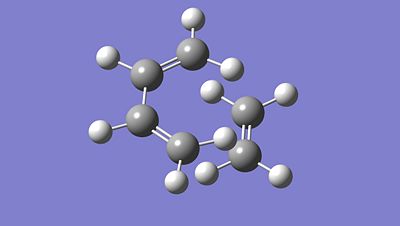Rep:Mod:module3dc
Computational Chemistry Lab: Module 3
Introduction
Predictions of reactions are now possible using computational chemistry. Indeed, by using a molecular modelling, we are able to accurately model many aspects of organic structures and reactivity which appears to be extremely useful. Indeed, computational studies can differentiate between the energy of stable conformers, but more important is the location of transition states and activated complexes that may be difficult or impossible to characterise experimentally. Thermodynamic information is obtained from the energy of stable states, and from barrier heights (energy of a transition state) we can also obtain kinetic data.
In this module, the modelisation and optimisation of the studied molecules is realised by using the software Gaussview, mainly based on quantum mechanics methods.
The Cope Rearrangement Tutorial
This first section is mainly about learning how to use the programs and method. Indeed, we will focus on several computational techniques for locating transition structures on potential energy surfaces. The case of study in order to become familiar with these computational techniques is the Cope rearrangement of 1,5-hexadiene as a chemical reactivity problem case of study.

The Diels Alder Cycloaddition
In this exercise, we will characterise transition structures using any of the several methods used in the first section. Additionally, we will look at the shape of some of the molecular orbitals.

